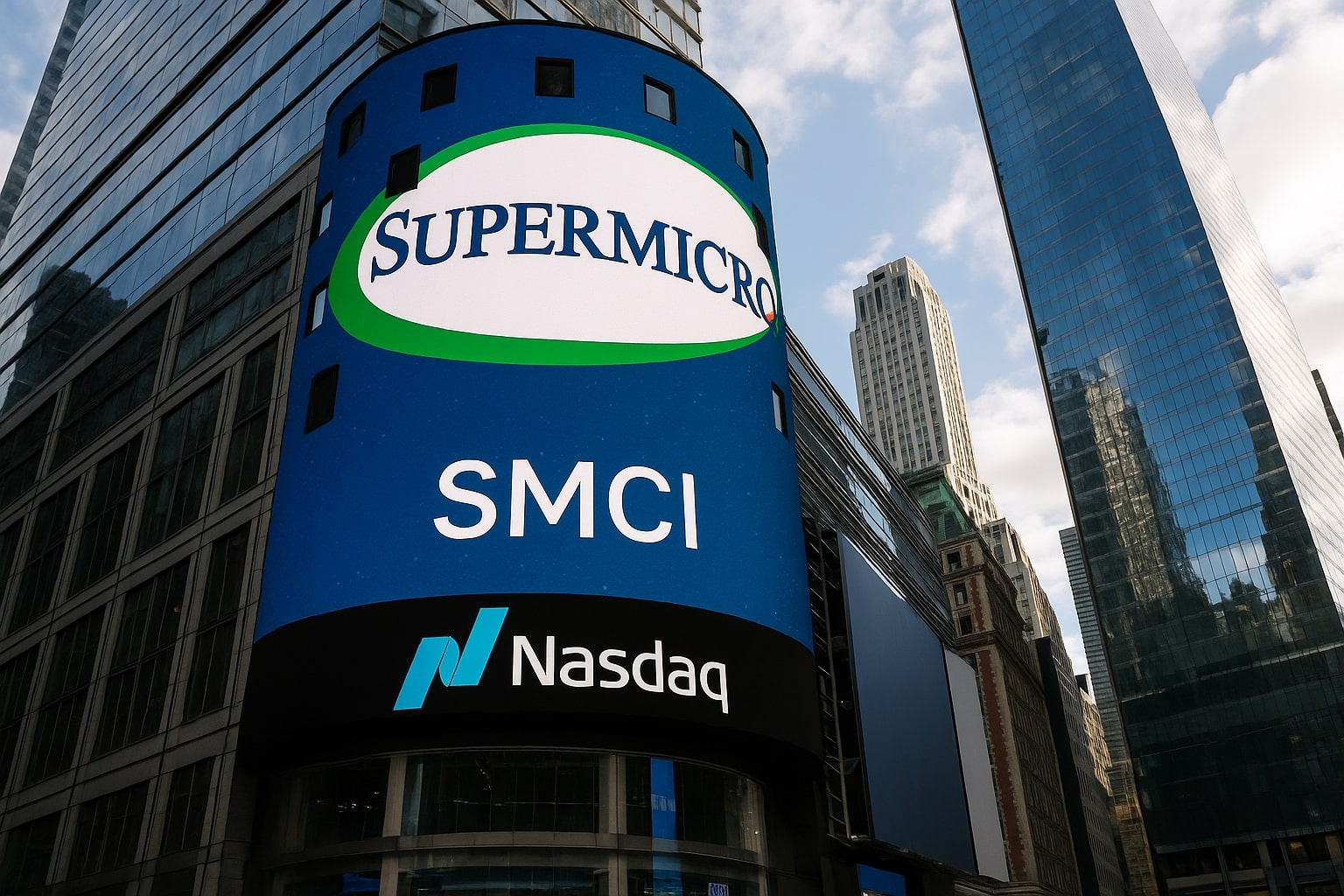
Super Micro Stock Forecast - (NASDAQ:SMCI) Shares Plunges Below $42 as Revenue Outlook Slashed
NASDAQ:SMCI loses 30% in August, hit by weak earnings, governance issues, and Alibaba chip shock, while insiders keep selling shares | That's TradingNEWS
Super Micro Computer (NASDAQ:SMCI) Faces Heavy Selling as Governance Risks Collide With AI Server Slowdown
Earnings Misses and Revenue Guidance Cut Hammer NASDAQ:SMCI
Super Micro Computer (NASDAQ:SMCI) collapsed through critical support in August, falling to $41.54 after losing more than 27% over the month. The plunge began with a disastrous Q2 2025 print, where revenue reached $5.76 billion, missing consensus, while EPS slipped to $0.41, down 34.9% year-on-year. The shockwaves extended when management cut fiscal 2026 revenue expectations to at least $33 billion, well below the earlier $40 billion outlook and barely above analyst consensus of $31.93 billion. A near $7 billion reduction in guidance rattled investor confidence, especially as the AI server boom that fueled SMCI’s meteoric rise now shows signs of moderation.
Governance Woes Erode Market Trust
SMCI’s latest 10-K disclosed material weaknesses in financial reporting controls, amplifying concerns that the company’s growth story is vulnerable not only to market cycles but also to transparency risks. Management admitted remediation efforts may not fully resolve control gaps. This admission comes at a time when investor scrutiny of AI valuations is at a peak. The governance shadow weighs heavily, as rivals like Alibaba unveiled new inference AI chips in late August, intensifying competition and raising questions about SMCI’s ability to defend margins. With gross profit of $2.43 billion against total revenue of $21.97 billion over the trailing twelve months, SMCI’s margin of 11% is already thinner than peers, leaving less room for error.
Margins, Valuation, and Competitive Pressure
Trailing twelve-month operating margin sits at 3.97%, net income at $1.05 billion, and diluted EPS at $1.68. Valuation reflects both growth promise and risk: P/E ratio of 24.7 and forward P/E of 15.8, discounted relative to broader AI peers, but justified by execution concerns. Price-to-sales has collapsed to 1.19, down from a lofty 4.04 a year ago, showing how rapidly sentiment has soured. Analysts still project 45% revenue growth in FY2026 and 33% EPS growth in FY2027, but the stock’s PEG ratio near 0.9x signals deep skepticism about whether those targets will be met. Meanwhile, competitors Dell (NYSE:DELL) and Hewlett Packard Enterprise (NYSE:HPE) are pushing aggressively into hyperscaler and enterprise AI racks, creating pressure on pricing and deployment cycles.
Balance Sheet and Liquidity Profile
Despite market panic, SMCI’s liquidity position remains a bulwark. The company holds $5.18 billion in cash, almost equal to its $5.06 billion in debt, keeping leverage at manageable levels with a debt-to-equity ratio of 80.3%. Operating cash flow over the last year reached $1.66 billion, with levered free cash flow at $1.45 billion, indicating SMCI still has the capacity to invest heavily in data center buildouts. The current ratio of 5.25 provides near-term safety, but investors remain fixated on execution — whether those funds are deployed efficiently to secure growth, or burned to offset governance remediation.
Insider Transactions Add to Bearish Sentiment
Insiders have consistently trimmed positions across 2024–2025, a signal closely watched by institutions. Activity disclosed in SMCI insider filings highlights ongoing selling pressure from executives, reinforcing the perception of weak internal conviction. With institutional ownership at 52.1% and short interest swelling to 96.3 million shares — representing 26.2% of the float — sentiment is skewed toward skepticism. The short ratio of 2.27 underscores that bearish positioning is not just retail noise but institutional conviction.
AI Infrastructure Catalysts Remain Intact
Despite the near-term wreckage, the DCBBS platform — boasting 40% power savings, 60% reduced footprint, and 20% TCO reductions — is a key overlooked growth lever. If adoption accelerates across hyperscalers, it could stabilize margins and revive confidence. Customer concentration risk is also easing: SMCI expanded from 3 major hyperscaler customers in FY2024 to 4 in 2025, targeting 6–8 large accounts by 2026. This diversification should expand its base revenue from $21.97 billion in FY2025 toward the guided $33 billion floor in FY2026, if execution is smooth.
Technical Picture and Market Psychology
Shares at $41.54 now sit below all major moving averages, with the 50-day average at $48.93 and the 200-day at $39.67, creating a fragile technical structure. After breaching the $42 floor, downside risk points to $40 and then $31, where the 100-week SMA offers the next major cushion. Upside recovery hinges on clearing $47 and then $52, levels tied to heavy resistance from August’s selloff. Momentum indicators lean bearish, but value investors eye the steep multiple compression as a possible entry.
Verdict on NASDAQ:SMCI
With the stock down over 30% in August, governance concerns unresolved, and competition heating, SMCI remains under siege. Yet, the balance sheet strength, AI rack efficiency gains, and 50% guided revenue growth in FY2026 provide a recovery blueprint if execution improves. At 24.7x trailing P/E and trading at just 1.19x sales, the valuation already prices in heavy skepticism. Based on available data, NASDAQ:SMCI deserves a Hold rating, skewed bearish near-term but with asymmetric upside potential should guidance prove credible and DCBBS deployment scale faster than expected.
That's TradingNEWS
Read More
-
PPA ETF at $154: Can This Defense ETF Keep Beating ITA and SPY?
14.12.2025 · TradingNEWS ArchiveStocks
-
XRP ETFs XRPI and XRPR Pull In $975M While XRP-USD Fights To Hold $2
14.12.2025 · TradingNEWS ArchiveCrypto
-
Natural Gas Price Forecast: NG=F Hits $4.11 As Warm Winter Outlook Puts $3.913 Support At Risk
14.12.2025 · TradingNEWS ArchiveCommodities
-
USD/JPY Price Forecast - Dollar to Yen Can BoJ’s 0.75% Shock Break The 155–158 Range?
14.12.2025 · TradingNEWS ArchiveForex


















